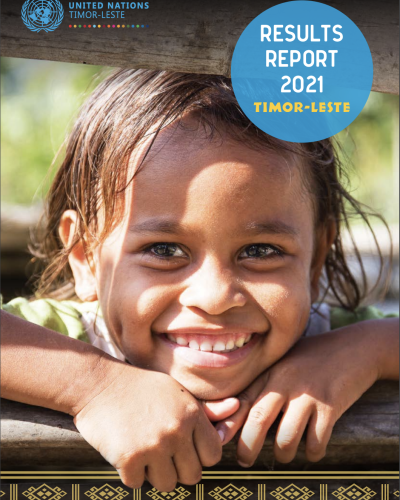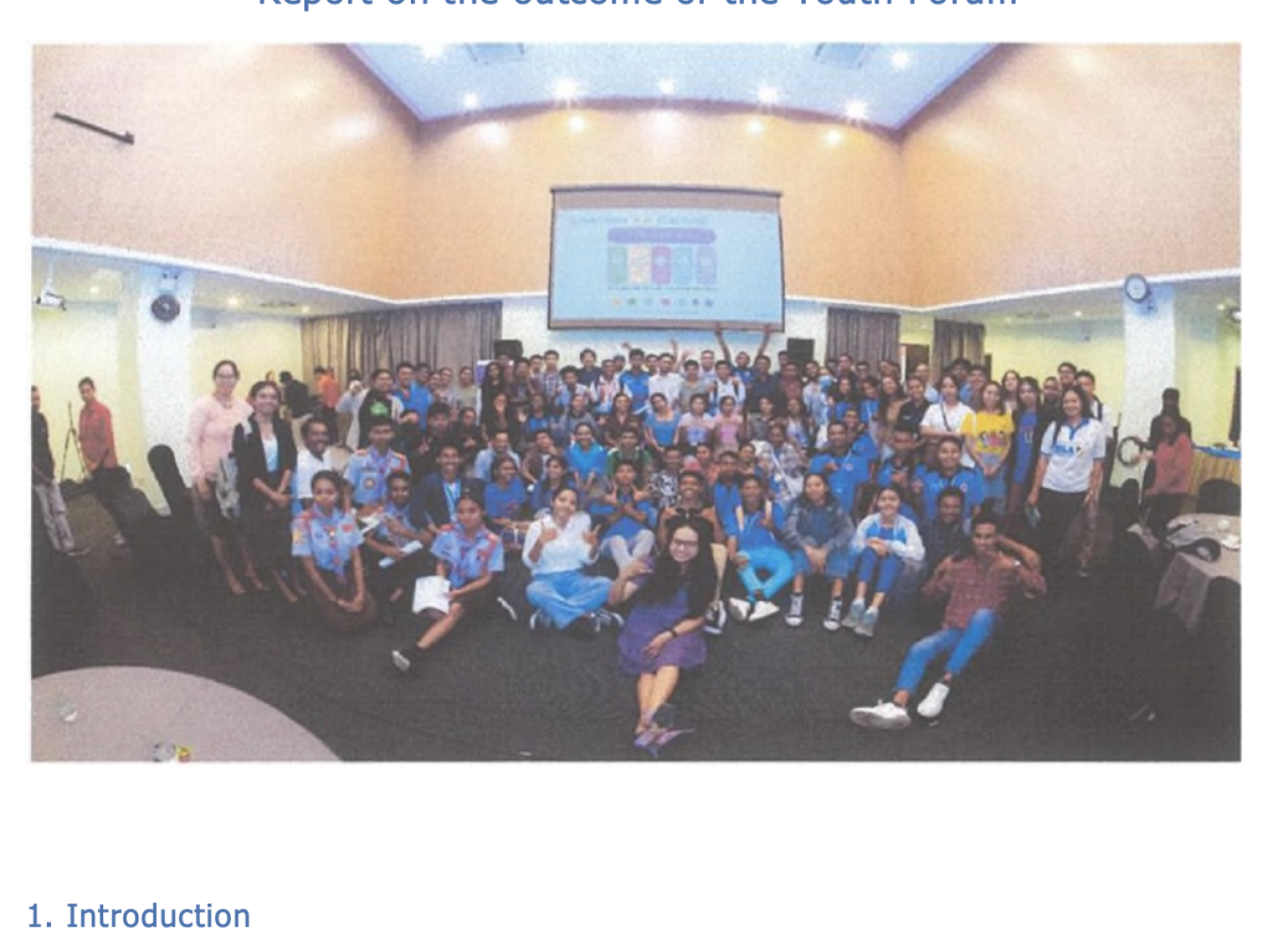Timor Leste Annual Results Report 2021

After a year of successfully controlling the COVID-19 outbreak, the country experienced a sudden surge in COVID-19 cases in early March. The pandemic status improved by the end of 2021 due to the successful national COVID-19 vaccination programme, which saw over 83 per cent of the eligible population receiving their first dose and over 68 per cent completing their second dose. By 2021, Timor-Leste recorded slightly under 20,000 confirmed cases with 122 deaths. While it was able to limit the health impact of COVID-19 compared to other countries in the region, the socio-economic implications were felt by many, disproportionately affecting the marginalized and at-risk groups and amplifying the underlying vulnerabilities and inequalities in Timor-Leste. Businesses were adversely affected, and unemployment increased.
According to the joint UN Socio-Economic Impact Assessment of COVID-19 in Timor-Leste Round 2 (SEIA 2.0), moderate or severe food insecurity prevalence rose from 36 per cent prior to the pandemic to 41.1 per cent. The prevalence of severe food insecurity also increased to 19.3 per cent, from 15 per cent severe chronic food insecurity (IPC 4) in 2018. Children experienced disruption of learning: over one-third of students stopped studying or studied irregularly during school closure due to the scarcity of printed learning materials. Students on the wrong side of the digital divide had challenges continuing their education. The youth were the worst hit by job loss and unemployment: 43.3 per cent of those aged 25 to 39 lost their jobs in 2020-2021.
In addition to the COVID-19 impact, heavy rains across Timor-Leste from 29 March to 4 April resulted in flash floods and landslides across all 13 municipalities, with the capital Dili and surrounding low-lying areas worst affected. The disaster affected over 31,000 households, 82 per cent of them in Dili municipality. According to the Post Disaster Needs Assessment (PDNA) conducted jointly by the Government of Timor-Leste, UN and World Bank, damage and losses from the flooding are estimated at approximately US$307.7 million. However, recovery needs across 12 sectors are estimated at US$530 million, pointing to the need to Build Back Better.
While uncertainties remain, macroeconomic indicators point to some signs of economic recovery. According to the Asian Development Bank, GDP is expected to grow by 2.2 per cent in 2021 and 4.0 per cent in 2022. The World Bank states that non-oil GDP contracted by 8.6 per cent in 2020 but is projected to recover by 1.6 per cent in 2021 due to base effects and COVID-19-related fiscal expansion. Also according to the World Bank, inflation increased to 3.6 per cent in the second quarter of 2021 – an eight-year high primarily driven by rising food, beverage, alcohol, and tobacco prices. Inflation may negatively impact the household economies of vulnerable households. In 2021, total government expenditure decreased to 75.3 per cent from 83.5 per cent in 2020. With the amendment of the Public Finance Management (PFM) law from 2021 onwards, the government has started applying programme-based budgeting.
In accelerating progress towards the SDGs, important high-level political commitments were made in advancing SDG 2 in Timor-Leste during the UN Food Systems Summit and the Nutrition for Growth Summit, in addition to finalizing the Consolidated National Action Plan for Nutrition and Food Security (CNAP-NFS). Furthermore, Timor-Leste’s participation in COP26 created momentum to scale-up climate action. At the same time, preparation for the third round of Universal Periodic Review (UPR) reaffirmed Timor-Leste’s commitment to further advance the human rights agenda, building on the country’s progress over the past 20 years as an independent nation.




















